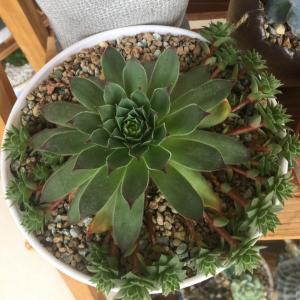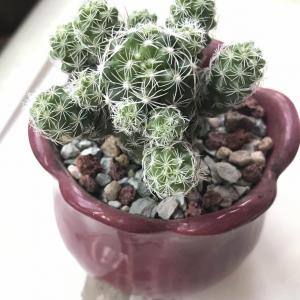文章
Dummer. ゛☀
2017年07月01日

The nickname of Stellaria media
Chickweed, also called chickweed flower, jade fu.
The growth habit of chickweed
Love is chickweed warm and moist growing environment, would be more common in temperate regions, suitable growth temperature is between 13 degrees to 23 degrees Celsius, it can still be cold, winter can be mild frost resistance.
The medicinal value of Stellaria media
Stellaria non-toxic, medicinal value is very high, with Qingrejiedu and diuresis.
Don't look like a very inconspicuous chickweed appearance, but it is very useful.
Morphological character
Annual or biennial, 10-30 cm high. Stem pitch or ascending, base much branched, often with pale purple red, was 1 (-2) line of hairs. Leaf blade broadly ovate or ovate, 1.5-2.5 cm long, 1.1-1.5 cm wide, apex acuminate or acute, base attenuate or nearly cordate, entire; basal leaves long stalked, upper leaves often sessile or shortly stalked.
Sparse cymes terminal; pedicels thin, with 1 rows of bristles, elongate after anthesis, pendulous, 7-14 mm long; sepals 5, ovate lanceolate, ca. 4 mm, apex slightly obtuse or suborbicular, margin broadly membranous, outside short glandular hairs; petals white, oblong, shorter than sepals, deep 2 lobed to base, lobes nearly linear; stamens 3-5, shorter than petals; styles 3, linear.
Capsule ovoid, slightly longer than persistent calyx, top 6 lobed, with numerous seeds; seeds ovate to suborbicular, slightly flattened, reddish brown, 1-1.2 mm in diameter, surface hemispherical aneurysm bulges, ridge significantly. 2n=40-42 (44). Florescence is 6-7 months, fruit 7-8 months.



Chickweed, also called chickweed flower, jade fu.
The growth habit of chickweed
Love is chickweed warm and moist growing environment, would be more common in temperate regions, suitable growth temperature is between 13 degrees to 23 degrees Celsius, it can still be cold, winter can be mild frost resistance.
The medicinal value of Stellaria media
Stellaria non-toxic, medicinal value is very high, with Qingrejiedu and diuresis.
Don't look like a very inconspicuous chickweed appearance, but it is very useful.
Morphological character
Annual or biennial, 10-30 cm high. Stem pitch or ascending, base much branched, often with pale purple red, was 1 (-2) line of hairs. Leaf blade broadly ovate or ovate, 1.5-2.5 cm long, 1.1-1.5 cm wide, apex acuminate or acute, base attenuate or nearly cordate, entire; basal leaves long stalked, upper leaves often sessile or shortly stalked.
Sparse cymes terminal; pedicels thin, with 1 rows of bristles, elongate after anthesis, pendulous, 7-14 mm long; sepals 5, ovate lanceolate, ca. 4 mm, apex slightly obtuse or suborbicular, margin broadly membranous, outside short glandular hairs; petals white, oblong, shorter than sepals, deep 2 lobed to base, lobes nearly linear; stamens 3-5, shorter than petals; styles 3, linear.
Capsule ovoid, slightly longer than persistent calyx, top 6 lobed, with numerous seeds; seeds ovate to suborbicular, slightly flattened, reddish brown, 1-1.2 mm in diameter, surface hemispherical aneurysm bulges, ridge significantly. 2n=40-42 (44). Florescence is 6-7 months, fruit 7-8 months.



0
0
文章
小九
2017年06月02日

今天小编为大家分享的是关于13种适合在夏天养的花,凉快又好看的文章,一起来看看吧。
夏季天气是一天比一天热了,搞的不少人心里烦躁,这个时候,你就需要来一盆好看的花,摆放在家里,让你在炎炎夏日中感觉到一阵凉爽!
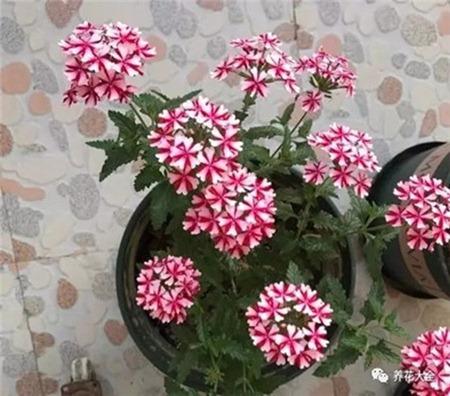
1碗莲
首先要说的,自然就是在夏季受到众人喜爱的碗莲了。因为荷花在家里种植需要的空间太大了,而小小的碗莲,则是家中必选的一种。

碗莲喜光,不耐阴暗,要放在大太阳下养护,如果叶片泛黄,需要施氮磷钾复合肥,薄肥勤施。
2驱蚊草
接下来要介绍的,就是家家户户都需要的驱蚊草了。夏天的蚊子总是烦不胜烦,这个时候,你就需要一盆驱蚊草来解决大麻烦了。
春秋是驱蚊草的生长旺盛期,可以使用水溶性复合肥15天施一次肥,也可以施用少量饼肥水和淘米水;夏季高温天气需要少浇水,不施肥,能够有利于根系发达,提高抗病性。
3薄荷
之前花花就已经跟大家强烈推荐过薄荷了,薄荷不仅可以泡茶,还能够做菜,而且味道清爽,是夏天必备的一种花。

薄荷喜欢阳光,阳光越强烈,香味越浓郁;不怕旱涝,放在阳台上天天浇水也没问题;大概20-30天施一次肥,肥料可以选择腐熟的骨头渣、中药渣等。
4美女樱
美女樱花色丰富,色彩艳丽,开花的时候呈现伞状,放在阳台或窗台上,实在是再合适不过了。
美女樱喜光,在半阴环境下容易徒长;夏季气温高,要注意浇水,大概7-10天浇一次水;生长期可以施豆饼肥水3-4次,并进行摘心,促进分枝。
5茑萝
茑萝的花朵开出来像是五角星一样,因此又称为五星花,可以沿着支撑物缠绕生长。

春秋可以给茑萝3-5天浇一次水,夏季气温高,可以2-3天浇一次水;施肥以氮磷钾复合肥或颗粒肥为主,大概20-30天追肥一次。
6米兰
米兰开黄色的小花,开花的时候清香淡雅,味道好像兰花,而且枝叶浓密,叶片油亮,非常适合夏天摆在家中。

米兰大概1个月施一次肥,肥料主要以复合肥和磷钾肥为主;春、冬季节大概3-5天浇一次水,夏季气温高,大概2-3天浇一次水;夏季多朝着叶片喷水,以有水珠滴下来为好,以保持空气湿度。
7瓜叶菊
瓜叶菊颜色鲜艳,又很容易爆盆,养在阳台上,是非常漂亮的。
瓜叶菊喜光,具有强烈的向光性,需要每周转动一次花盆;生长期大概10天左右施一次腐熟的稀薄液肥;花蕾显色后,每周朝叶面喷洒一次0.2%的磷酸二氢钾溶液,促进花芽分化。
8勋章菊
勋章菊又被称为非洲太阳花,花色多样,颜色鲜艳,在家里摆一盆,心情也能变得好起来。
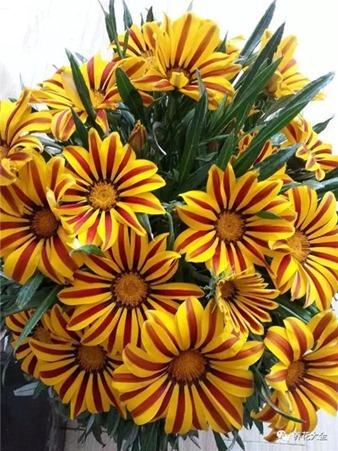
勋章菊喜欢阳光,光照越强,开花越鲜艳;对水分比较敏感,盆内不能积水,看到土壤发白了之后再浇水即可。
9一帆风顺
白掌又叫一帆风顺,因为赋予了它美好的寓意,因此很多人都喜欢在家里养一盆。
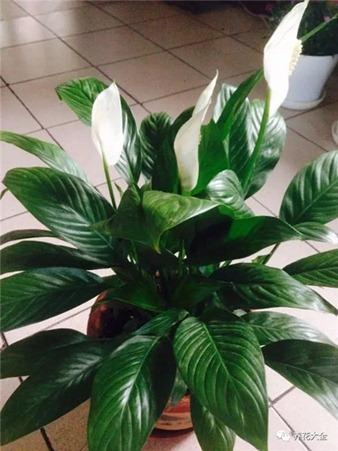
一帆风顺耐半阴,最好放在光线明亮的客厅等地方进行养护;对水分的要求非常高,夏季需要经常朝着叶面喷水;可以进行水培。
10百万小铃
百万小铃是小花矮牵牛的一种,是很多花友选择爆盆花的首选。

百万小铃喜光,太阳越足,它开花越多;配土可以按照蚯蚓土: 土壤(3:1)作为基肥;浇水要等到盆土发白了之后再浇。
11矾根
如果你不喜欢开花的植物,那完全可以选择矾根啊。矾根的颜色多彩,只要养护得当,甚至比花还要好看十几倍!
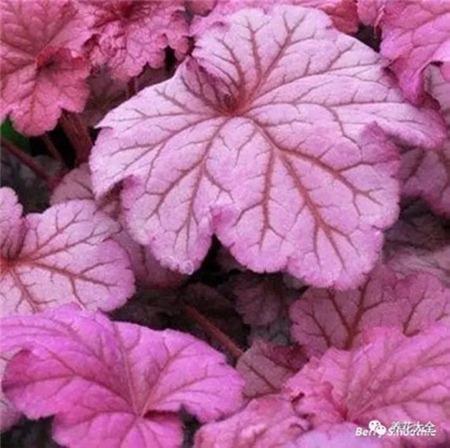
对于矾根来说,通风最重要;夏季气温高的时候,需要一周浇2次水,春秋季节1周浇1次,浇水喷溅到叶面上要及时擦干,不然容易灼伤叶片。
12龟背竹
龟背竹的植株挺拔清秀,给人优雅高洁的感觉,吸引了不少花友的眼球,炎炎夏日放在家里,还能够降低温度,实在是一举两得了!
龟背竹不能阳光直射,可以放在光线明亮的客厅里;夏季气温高,需要1-2天浇一次水,还要朝着叶片和花盆周围的空气中喷水;大概15天施肥一次,肥料可以用稀释的饼肥水或者是沤制的动物粪便水。
13铜钱草
看到铜钱草那圆圆的大叶子,就让人感觉到一阵凉爽,更不要说铜钱草可是非常容易爆盆的,你一个不小心,家里就得泛滥成灾了!
只要给足了铜钱草光照和水分,它就很容易爆盆的。平常可以将铜钱草放在光照充足的阳台上,夏季高温天气多浇水,也可以进行水培。
夏季天气是一天比一天热了,搞的不少人心里烦躁,这个时候,你就需要来一盆好看的花,摆放在家里,让你在炎炎夏日中感觉到一阵凉爽!

1碗莲
首先要说的,自然就是在夏季受到众人喜爱的碗莲了。因为荷花在家里种植需要的空间太大了,而小小的碗莲,则是家中必选的一种。

碗莲喜光,不耐阴暗,要放在大太阳下养护,如果叶片泛黄,需要施氮磷钾复合肥,薄肥勤施。
2驱蚊草
接下来要介绍的,就是家家户户都需要的驱蚊草了。夏天的蚊子总是烦不胜烦,这个时候,你就需要一盆驱蚊草来解决大麻烦了。
春秋是驱蚊草的生长旺盛期,可以使用水溶性复合肥15天施一次肥,也可以施用少量饼肥水和淘米水;夏季高温天气需要少浇水,不施肥,能够有利于根系发达,提高抗病性。
3薄荷
之前花花就已经跟大家强烈推荐过薄荷了,薄荷不仅可以泡茶,还能够做菜,而且味道清爽,是夏天必备的一种花。

薄荷喜欢阳光,阳光越强烈,香味越浓郁;不怕旱涝,放在阳台上天天浇水也没问题;大概20-30天施一次肥,肥料可以选择腐熟的骨头渣、中药渣等。
4美女樱
美女樱花色丰富,色彩艳丽,开花的时候呈现伞状,放在阳台或窗台上,实在是再合适不过了。
美女樱喜光,在半阴环境下容易徒长;夏季气温高,要注意浇水,大概7-10天浇一次水;生长期可以施豆饼肥水3-4次,并进行摘心,促进分枝。
5茑萝
茑萝的花朵开出来像是五角星一样,因此又称为五星花,可以沿着支撑物缠绕生长。

春秋可以给茑萝3-5天浇一次水,夏季气温高,可以2-3天浇一次水;施肥以氮磷钾复合肥或颗粒肥为主,大概20-30天追肥一次。
6米兰
米兰开黄色的小花,开花的时候清香淡雅,味道好像兰花,而且枝叶浓密,叶片油亮,非常适合夏天摆在家中。

米兰大概1个月施一次肥,肥料主要以复合肥和磷钾肥为主;春、冬季节大概3-5天浇一次水,夏季气温高,大概2-3天浇一次水;夏季多朝着叶片喷水,以有水珠滴下来为好,以保持空气湿度。
7瓜叶菊
瓜叶菊颜色鲜艳,又很容易爆盆,养在阳台上,是非常漂亮的。
瓜叶菊喜光,具有强烈的向光性,需要每周转动一次花盆;生长期大概10天左右施一次腐熟的稀薄液肥;花蕾显色后,每周朝叶面喷洒一次0.2%的磷酸二氢钾溶液,促进花芽分化。
8勋章菊
勋章菊又被称为非洲太阳花,花色多样,颜色鲜艳,在家里摆一盆,心情也能变得好起来。

勋章菊喜欢阳光,光照越强,开花越鲜艳;对水分比较敏感,盆内不能积水,看到土壤发白了之后再浇水即可。
9一帆风顺
白掌又叫一帆风顺,因为赋予了它美好的寓意,因此很多人都喜欢在家里养一盆。

一帆风顺耐半阴,最好放在光线明亮的客厅等地方进行养护;对水分的要求非常高,夏季需要经常朝着叶面喷水;可以进行水培。
10百万小铃
百万小铃是小花矮牵牛的一种,是很多花友选择爆盆花的首选。

百万小铃喜光,太阳越足,它开花越多;配土可以按照蚯蚓土: 土壤(3:1)作为基肥;浇水要等到盆土发白了之后再浇。
11矾根
如果你不喜欢开花的植物,那完全可以选择矾根啊。矾根的颜色多彩,只要养护得当,甚至比花还要好看十几倍!

对于矾根来说,通风最重要;夏季气温高的时候,需要一周浇2次水,春秋季节1周浇1次,浇水喷溅到叶面上要及时擦干,不然容易灼伤叶片。
12龟背竹
龟背竹的植株挺拔清秀,给人优雅高洁的感觉,吸引了不少花友的眼球,炎炎夏日放在家里,还能够降低温度,实在是一举两得了!
龟背竹不能阳光直射,可以放在光线明亮的客厅里;夏季气温高,需要1-2天浇一次水,还要朝着叶片和花盆周围的空气中喷水;大概15天施肥一次,肥料可以用稀释的饼肥水或者是沤制的动物粪便水。
13铜钱草
看到铜钱草那圆圆的大叶子,就让人感觉到一阵凉爽,更不要说铜钱草可是非常容易爆盆的,你一个不小心,家里就得泛滥成灾了!
只要给足了铜钱草光照和水分,它就很容易爆盆的。平常可以将铜钱草放在光照充足的阳台上,夏季高温天气多浇水,也可以进行水培。
1
2
文章
权问薇
2017年05月29日


#巴西美人 养护温度和光照条件
一般只要温度等条件适合,巴西美人一年四季都可生长,夏季高温时,需适当遮荫,冬季室温不可低于5℃,但最好使它在冬季休眠,休眠温度为13℃,温度太低,叶尖和叶缘会出现黄褐斑。
室内摆入巴西美人应在光线充足的地方。若光钱太弱,叶片上的斑纹会变绿,基部叶片黄化,失去观赏价值。

巴西美人浇水
巴西美人在培养期间要保持水质的清洁,每星期浇水1~2次,水不易过多,以防树干腐烂。夏季高温时,可用喷雾法来提高空气湿度,并在叶片上喷水,保持湿润。

巴西美人施肥
巴西美人在生长期应适当进行根外追肥,用100倍稀释营养喷叶片,每半月一次,巴西美人栽培数年后,植株过于高大或茎干下部叶片脱落,株形较差时,应进行修剪。每年早春换盆或换土。

巴西美人的病虫害
盆栽巴西美人,如果环境不适宜,会有红蜘蛛、蓟马、介壳虫等危害。此外,过于通风、干旱、不规则的浇水和施肥过量,都能造成叶尖枯焦。

0
1
文章
巴黎铁塔
2017年05月25日
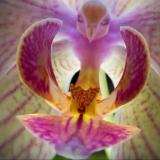

#盆栽花卉 黄叶的13种原因及补救措施如下:
(1)浇水过多
盆土长期过湿,造成土中缺氧,使部分须根腐烂,阻碍正常呼吸和水分养分的吸收,引起叶片变黄脱落。受害后先是嫩叶变成淡黄色,继而老叶也渐渐发黄,应立即控制浇水,暂停施肥,并经常松土,使土壤通气良好。
(2)干旱脱水
养花漏浇水或长期浇半腰水(即上湿下干),影响养分吸收,也易引起叶色暗淡无光泽,叶片萎蔫下垂。先是下部老叶老化,并逐渐由下向上枯黄脱落。此时需少量浇水并喷水,使其逐渐复原后再转入正常浇水,
(3)长久脱肥
长期没有施氨肥或未换盆换土,土中氮素等营养元素缺乏,导致枝叶瘦弱,叶薄而黄。需及时倒盆,换入新的疏松肥沃的培养土逐渐增施稀薄腐熟液肥或复合花肥。
(4)施肥过量
施肥过多就会出现新叶肥厚,且多凹凸不平,老叶干尖焦黄脱落,应立即停止施肥,增加浇水量,使肥料从盆底排水孔流出,或立即倒盆,用水冲洗土坨后再重新栽入盆内。
(5)炎热高温
夏季若将性喜凉爽的花卉(如仙客来、倒挂金钟、四季海棠)放在高温处让强光直晒,极易引起幼叶叶尖和叶缘枯焦,或叶黄脱落。需及时移至通风良好的阴凉处。
(6)蔽荫过度
若将喜阳光的花卉长期放在蔽荫处或光线不足的地方,就会导致枝叶徒长,叶薄而黄,不开花或很少开花。需注意将花盆移至向阳处。

(7)水土偏碱
北方多数地区土壤及水中含盐碱较多,栽植喜酸性土花卉,如杜鹃、山茶、含笑、栀子花、兰花、白兰、桂花等,由于土中缺乏可被其吸收的可溶性铁等元素,叶片就会逐渐变黄。栽植时要选用酸性土,生长期间经常浇矾肥水。
(8)密不通风
若施氮肥过多,枝叶长得进于茂盛,加上长期未修剪,致使内膛枝叶光线不足,容易引起叶片发黄脱落。应合理施肥并加强修剪,使之通风透光。
(9)空气干燥
室内空气过分干燥时,一些喜湿润环境的花卉,如吊兰、兰花等往往会出现叶尖干枯或叶缘焦枯等现象。应注意采取喷水、套塑料薄膜罩等法增加空气湿度,
(10)温度不当
冬季室温过低,对于性喜高温花卉常易受到寒害,因而导致叶片发黄,严重时枯黄而死。若室温过高,植株蒸腾作用过盛,根部水分养分供不应求,也会使叶片变黄。应请注意及时调整室温。
(11)土壤偏酸
南方红壤土偏酸,镁元素等易流失,栽种耐碱或喜微缄性土的花木,如夹竹桃、黄杨、迎春等,常易出现老叶叶脉间失绿发黄现象。可施钙镁磷肥或喷洒硫酸镁溶液。
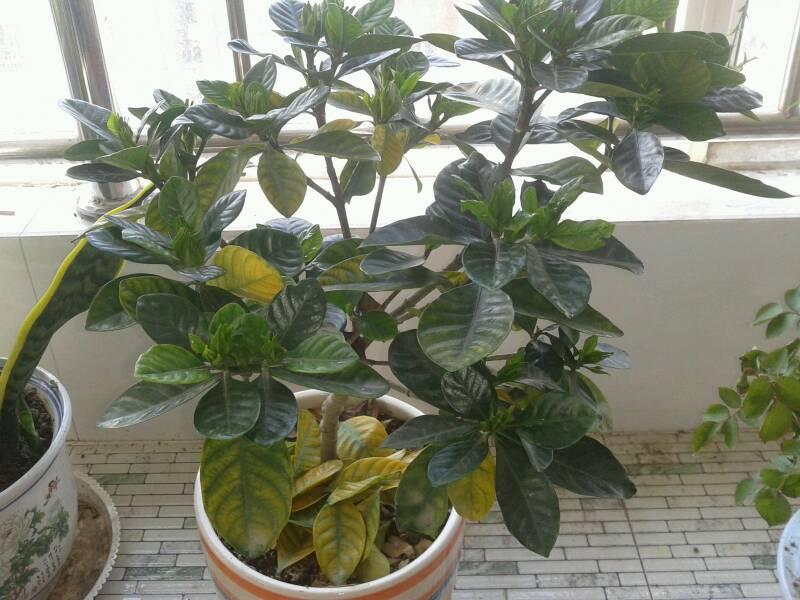
(12)病虫为害
受到真菌等病菌侵害引起的叶斑病,易使叶片局部坏死,出现黄色斑点或斑块,严重时整叶枯黄脱落,受到花叶病毒侵染后叶片上出现黄绿相嵌的斑驳;遭受介壳虫、红蜘蛛等为害,叶片也会变成局部黄枯,甚至整叶萎黄脱落。均应及时喷药防治。
(13)强性刺激
防治病虫害时使用农药浓度过大,或者受到大气中有毒气体污染,或者气温高时骤然浇灌冷水等,均易引起叶尖或叶面局部发黄焦枯,甚至全株枯死。因此应注意合理使用农药,设法排除空气污染源。盛夏避免在中午前后用冷水浇花。最后还应提到的是,盆花黄叶有时是一种原因引起的,但往往是由于多种因素造成的,应作出正确诊断,方能对症下药。
0
0
文章
美琪爱拍照
2017年05月24日

#月季黑斑病 又名褐斑病,为世界性月季病害。
症状
月季叶片、嫩枝和花梗均可受害。叶上病斑初为紫褐色至褐色小点,后扩展成直径 1. 5~13毫米的圆斑,黑色或深褐色,边缘纤毛状,但个别品种上边缘也可整齐光滑。病斑周围常有黄色晕圈包围。在扩大镜下,病部可见黑色疱状的小粒体。病斑往往几个相连,病部周围叶大面积发黄,使得病斑成为带有绿色边缘的“小岛”。病叶容易脱落,但有些月季品种却不脱落。幼嫩枝条和花梗上产生紫色到黑色条状斑点,微下陷。病害严重发生时,整个植株下部及中部片全部脱落,仅留顶部几张新叶。
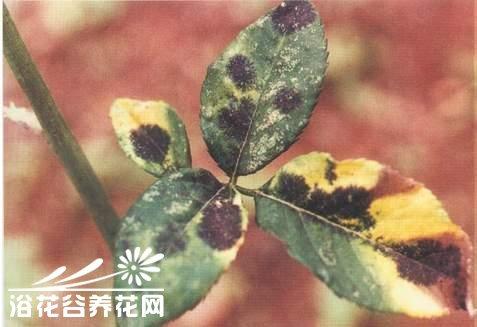
病原
为放线孢属的真菌〔Actinonema rose(Lib.)Fr.〕。分生孢子盘着生于寄主角质层下,以后突出表皮。大小为108~198微米,分生抱子梗短,不明显。分生炮子长椭圆形或鱼鳔状,大小为 18~25 X 5~6微米,双细胞,上小下大,分隔处略有缢束。顶端如喙状,常偏向一侧。
传染途径
以菌丝在病枝、病叶或病落叶上越冬,翌年早春,形成分生孢子盘,产生分生孢子传播危害。分生拖子也是初浸染来源之一。分生孢子借风雨、飞溅水滴传播危害,因而多雨、多雾、多露时易于发病。据试验,叶上有滞留水分时,孢子6小时内即可萌芽侵入。
萌发侵入的适宜温度为2 0~2 5℃,PH值为7~8,潜育期10~11天,老叶潜育期略长,为13天。病菌可多次重复侵染,整个生长季节均可发病。一般梅雨季节和台风季节发病重,炎夏高温干旱季节病害扩展缓慢。植株衰弱时容易感病。品种间抗病性存在差异,但无免疫品种。
防治方法
1、随时清扫落叶,摘去病叶,以减少侵染来源。冬季对重病株进行重度修剪,清除病茎上的越冬病原。
2、盆栽时不要放置过密,最好不直接放在地面,以免地面积水时盆土过湿,最好的是放在阶梯形的植台上。改进浇水方式和时间,应从盆沿浇入,避免喷浇。不在晚间浇水,以免叶片上有水时不能很快干燥,有利病菌入侵。
3、药剂防治。夏季新叶刚刚展开时,即应开始喷药,一般7~10天1次。使用的药剂有50%多菌灵可湿性粉500~1000倍液,或75%百菌清可湿性粉500倍液,或80%代森锌可湿性粉500倍液,或1:1:100倍波尔多倍液,或70%甲基托市津1000~1200倍液。
冬季修剪后也可喷波美3~5度的石流合剂,以铲除病菌。
症状
月季叶片、嫩枝和花梗均可受害。叶上病斑初为紫褐色至褐色小点,后扩展成直径 1. 5~13毫米的圆斑,黑色或深褐色,边缘纤毛状,但个别品种上边缘也可整齐光滑。病斑周围常有黄色晕圈包围。在扩大镜下,病部可见黑色疱状的小粒体。病斑往往几个相连,病部周围叶大面积发黄,使得病斑成为带有绿色边缘的“小岛”。病叶容易脱落,但有些月季品种却不脱落。幼嫩枝条和花梗上产生紫色到黑色条状斑点,微下陷。病害严重发生时,整个植株下部及中部片全部脱落,仅留顶部几张新叶。

病原
为放线孢属的真菌〔Actinonema rose(Lib.)Fr.〕。分生孢子盘着生于寄主角质层下,以后突出表皮。大小为108~198微米,分生抱子梗短,不明显。分生炮子长椭圆形或鱼鳔状,大小为 18~25 X 5~6微米,双细胞,上小下大,分隔处略有缢束。顶端如喙状,常偏向一侧。
传染途径
以菌丝在病枝、病叶或病落叶上越冬,翌年早春,形成分生孢子盘,产生分生孢子传播危害。分生拖子也是初浸染来源之一。分生孢子借风雨、飞溅水滴传播危害,因而多雨、多雾、多露时易于发病。据试验,叶上有滞留水分时,孢子6小时内即可萌芽侵入。
萌发侵入的适宜温度为2 0~2 5℃,PH值为7~8,潜育期10~11天,老叶潜育期略长,为13天。病菌可多次重复侵染,整个生长季节均可发病。一般梅雨季节和台风季节发病重,炎夏高温干旱季节病害扩展缓慢。植株衰弱时容易感病。品种间抗病性存在差异,但无免疫品种。
防治方法
1、随时清扫落叶,摘去病叶,以减少侵染来源。冬季对重病株进行重度修剪,清除病茎上的越冬病原。
2、盆栽时不要放置过密,最好不直接放在地面,以免地面积水时盆土过湿,最好的是放在阶梯形的植台上。改进浇水方式和时间,应从盆沿浇入,避免喷浇。不在晚间浇水,以免叶片上有水时不能很快干燥,有利病菌入侵。
3、药剂防治。夏季新叶刚刚展开时,即应开始喷药,一般7~10天1次。使用的药剂有50%多菌灵可湿性粉500~1000倍液,或75%百菌清可湿性粉500倍液,或80%代森锌可湿性粉500倍液,或1:1:100倍波尔多倍液,或70%甲基托市津1000~1200倍液。
冬季修剪后也可喷波美3~5度的石流合剂,以铲除病菌。
1
1
文章
Eyin Thor
2017年05月23日

Do you kill your plants often? Well here’re 13 things you must avoid to make your container plants keep growing.

1. Overwatering
Many new gardener believes that the more they water the better. All plants (including non-potted plants) have the different watering needs and *those needs may also vary depending upon the time of the year or season, the amount of light and ambient temperature. The easiest solution to avoid this problem is knowing the moisture level required by each plant.
The majority of plants (except moisture loving plants) loves when the top surface of the substrate dries out between the watering spells, others require the soil to be kept slightly moist. A good method is to usually poke your finger into the soil about an inch deep and feel if it is wet or rather dry.
2. Underwatering
It is equally harmful to the plants. Back to the same point, it is essential to know the moisture requirements of each plant to keep them healthy. Also, it is obvious, in summer all the plants require more water and you should double the amount of water. When you water your plants, do it thoroughly, so that the entire substrate moisten well and the slight amount of water seeps out from the bottom holes of the pots and then wait for it to dry (with the method of poking your finger) and then water again.
3. You do not know everything about the plant
No two plants are identical. The number one thing you should do is read the instructions that come with the plant you have acquired. Always, when you purchase plants in the nursery ask them about the growing requirements. Whenever you get a new plant search about it thoroughly on the web. There are many gardening websites (ours too) and blogs of enthusiastic gardeners who have excellent information about plants.
4. Too little or too much sunlight
Yo might be wrong if you think all plants love the sun, there are some that require shade or part shade. According to experts, the plants themselves can tell us if they are getting the right amount of light or not. For example, the leaves may change color or become scorched or brownish if they are getting too much sunlight. On the other hand, if you notice that your plant is “stretching its neck” toward the light or the leaves are excessively bigger then they definitely need more light. One thing to be noted is that when the warm climate plants are grown in colder zones (whether they are grown there in full or part sun) they require full sun. Similarly, the temperate plants in warm tropics grow best in part sun or shade.
5. Moving or changing position of plants
Plants get used to the place they are placed on and do not like being moved constanly. If one of your plants is thriving correctly under certain temperatures and conditions, avoid moving it to another place as it could make difficult for the plant to adapt to its new place.
6. Incorrect soil
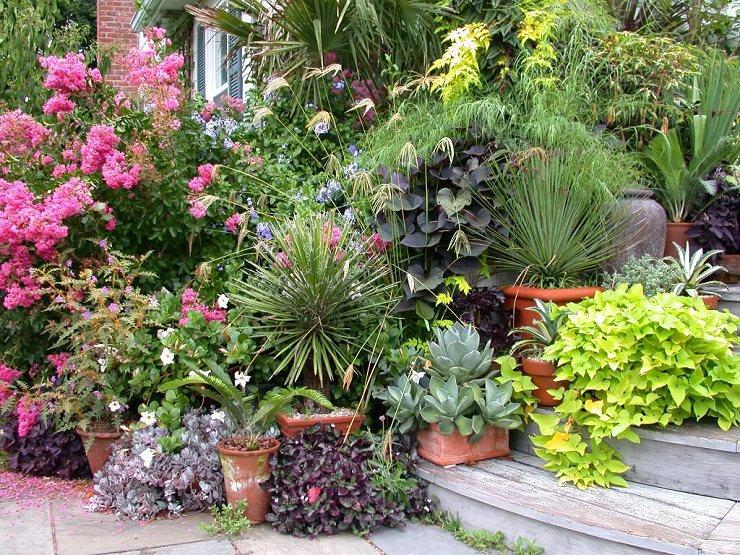
Each plant species has different planting needs and soil requirements. It is recommended that you do proper research about the soil type before planting any plant. However, in containers, well-draining soil is used to avoid root rot. You can make your own light and crumbly soilless mix or buy an organic potting mix of good quality.
7. No transplanting
Potted plants may feel “subjected” to their containers. The majority of them outgrow their pots over a period of about one to two years (depending on how quickly they grow), so it is important that you transplant them into a larger container with fresh and well-nourished potting soil. You can prune the roots of your plants if you don’t want to change their existing pot.
One of the signs to know when to transplant is when the leaves turn yellow, the plant stops growing or seems thirsty and requires water again and again. Even in some cases, you can see that the roots are coming out from the drainage holes.
8. Ignoring the pests
Some of the most common pests that can affect your potted plants are aphids, spider mites, scales, whiteflies and mealybugs. You can prevent pests from attacking your container garden with some techniques. Whenever you buy a new plant scrutinize it to see any sign of pests or diseases. Keep an eye on diseased or weak plants or the ones that are in stress; pests prefer to attack such plants. Look at the inside of leaves and tips of the plants, these are the parts that pests infest most. If pests are already damaging your plants, first identify what type of pests they are and then treat them appropriately, prefer organic pesticides.
9. Carelessness
Are you going on a vacation? It is good for you but not for your potted plants. Be sure to make arrangements for them. Ask someone to come and water the plants when you are away. Another option is to use self-watering containers, they are great especially if you’re a busy person and often forget about watering your plants.
10. Less or no fertilizer
Potted plants depend on soil nutrients and can often require supplements to grow better and healthy besides improving the production of flowers and fruits. Using a balanced fertilizer (easily available) regularly and according to the package instructions, you can ensure that your plants are getting all the nutrients they need. While most of your plants do well with balanced fertilizer, there may be some that require specific combination of nutrients.
11. Overfertilization
Overfertilization can also harm your plants. It can even kill them. Fertilizers when used in excess can damage the roots. If you see the symptoms like yellowing and wilting of lower leaves, browning leaf tips and its margins, defoliation, slow or no growth then it is possible that your plant is suffering from overfertilization.
12. No pinching, deadheading, and pruning
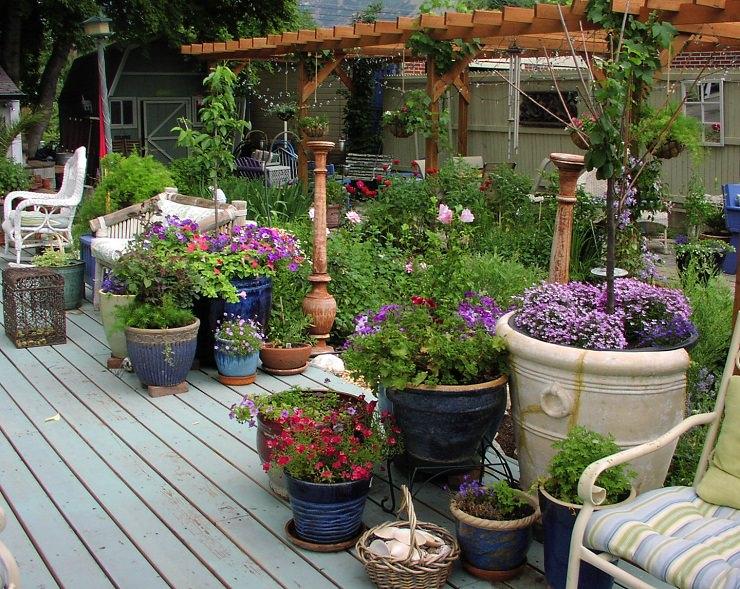
If you want bushier growth, pinch the tips of young plants. Also, many flowering plants require “deadheading”, which means picking and removing the old flowers to promote new ones. You will know when to remove them once the flowers start to fade or wilt or turn brownish.
Potted plants require pruning too and on time, some of the fruits and flowering plants produce only on new branches, so if you must not ignore pruning.
13. Exposing to extreme temperatures
If you research carefully about the plants you’ll find how much temperature (maximum or minimum) they tolerate best. In winters, if require, it is good if you protect such plants by keeping them indoors or in a greenhouse.
If you’re living in a warm climate where summers are hot, protect your plants from the intense sun in summer.

1. Overwatering
Many new gardener believes that the more they water the better. All plants (including non-potted plants) have the different watering needs and *those needs may also vary depending upon the time of the year or season, the amount of light and ambient temperature. The easiest solution to avoid this problem is knowing the moisture level required by each plant.
The majority of plants (except moisture loving plants) loves when the top surface of the substrate dries out between the watering spells, others require the soil to be kept slightly moist. A good method is to usually poke your finger into the soil about an inch deep and feel if it is wet or rather dry.
2. Underwatering
It is equally harmful to the plants. Back to the same point, it is essential to know the moisture requirements of each plant to keep them healthy. Also, it is obvious, in summer all the plants require more water and you should double the amount of water. When you water your plants, do it thoroughly, so that the entire substrate moisten well and the slight amount of water seeps out from the bottom holes of the pots and then wait for it to dry (with the method of poking your finger) and then water again.
3. You do not know everything about the plant
No two plants are identical. The number one thing you should do is read the instructions that come with the plant you have acquired. Always, when you purchase plants in the nursery ask them about the growing requirements. Whenever you get a new plant search about it thoroughly on the web. There are many gardening websites (ours too) and blogs of enthusiastic gardeners who have excellent information about plants.
4. Too little or too much sunlight
Yo might be wrong if you think all plants love the sun, there are some that require shade or part shade. According to experts, the plants themselves can tell us if they are getting the right amount of light or not. For example, the leaves may change color or become scorched or brownish if they are getting too much sunlight. On the other hand, if you notice that your plant is “stretching its neck” toward the light or the leaves are excessively bigger then they definitely need more light. One thing to be noted is that when the warm climate plants are grown in colder zones (whether they are grown there in full or part sun) they require full sun. Similarly, the temperate plants in warm tropics grow best in part sun or shade.
5. Moving or changing position of plants
Plants get used to the place they are placed on and do not like being moved constanly. If one of your plants is thriving correctly under certain temperatures and conditions, avoid moving it to another place as it could make difficult for the plant to adapt to its new place.
6. Incorrect soil

Each plant species has different planting needs and soil requirements. It is recommended that you do proper research about the soil type before planting any plant. However, in containers, well-draining soil is used to avoid root rot. You can make your own light and crumbly soilless mix or buy an organic potting mix of good quality.
7. No transplanting
Potted plants may feel “subjected” to their containers. The majority of them outgrow their pots over a period of about one to two years (depending on how quickly they grow), so it is important that you transplant them into a larger container with fresh and well-nourished potting soil. You can prune the roots of your plants if you don’t want to change their existing pot.
One of the signs to know when to transplant is when the leaves turn yellow, the plant stops growing or seems thirsty and requires water again and again. Even in some cases, you can see that the roots are coming out from the drainage holes.
8. Ignoring the pests
Some of the most common pests that can affect your potted plants are aphids, spider mites, scales, whiteflies and mealybugs. You can prevent pests from attacking your container garden with some techniques. Whenever you buy a new plant scrutinize it to see any sign of pests or diseases. Keep an eye on diseased or weak plants or the ones that are in stress; pests prefer to attack such plants. Look at the inside of leaves and tips of the plants, these are the parts that pests infest most. If pests are already damaging your plants, first identify what type of pests they are and then treat them appropriately, prefer organic pesticides.
9. Carelessness
Are you going on a vacation? It is good for you but not for your potted plants. Be sure to make arrangements for them. Ask someone to come and water the plants when you are away. Another option is to use self-watering containers, they are great especially if you’re a busy person and often forget about watering your plants.
10. Less or no fertilizer
Potted plants depend on soil nutrients and can often require supplements to grow better and healthy besides improving the production of flowers and fruits. Using a balanced fertilizer (easily available) regularly and according to the package instructions, you can ensure that your plants are getting all the nutrients they need. While most of your plants do well with balanced fertilizer, there may be some that require specific combination of nutrients.
11. Overfertilization
Overfertilization can also harm your plants. It can even kill them. Fertilizers when used in excess can damage the roots. If you see the symptoms like yellowing and wilting of lower leaves, browning leaf tips and its margins, defoliation, slow or no growth then it is possible that your plant is suffering from overfertilization.
12. No pinching, deadheading, and pruning

If you want bushier growth, pinch the tips of young plants. Also, many flowering plants require “deadheading”, which means picking and removing the old flowers to promote new ones. You will know when to remove them once the flowers start to fade or wilt or turn brownish.
Potted plants require pruning too and on time, some of the fruits and flowering plants produce only on new branches, so if you must not ignore pruning.
13. Exposing to extreme temperatures
If you research carefully about the plants you’ll find how much temperature (maximum or minimum) they tolerate best. In winters, if require, it is good if you protect such plants by keeping them indoors or in a greenhouse.
If you’re living in a warm climate where summers are hot, protect your plants from the intense sun in summer.
4
5
文章
stone
2017年05月22日
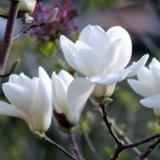
#彩色马蹄莲 与#白色马蹄莲 在栽培管理上没有太大的区别。生长适温均为15℃至25℃,开花期间,日间温度为16℃至19℃,白色品种夜间温度不低于13℃,而有色品种应不低于16℃。若温度高于25℃或低于5℃,则植株被迫进入休眠。它性喜温暖湿润和阳光充足的环境,不耐寒冷和干旱。
彩色马蹄莲植株开完花后,浇水量要逐渐减少,叶变黄枯萎时,要完全停止浇水。生长季节,每半月施稀薄液肥一次,当花莛抽出后,要增加到每周一次,直到花期结束为止。
家庭盆栽彩色马蹄莲,可施用多元缓释复合肥颗粒,也可用0.2%的尿素加0.1%的磷酸二氢钾混合液。栽培用土,可用园土、腐叶土、泥炭土按2∶2∶1 混合,再加入少量的多元复合肥颗粒。
家庭养护马蹄莲时,还应注意以下三点:一是它的心叶忌水湿,平时浇水不留心,使污水滴流入叶心内,易引起软腐病;二是施肥时要从盆缘施入,切忌肥液淋入叶柄内或溅入株心,否则易引起黄叶或腐烂;三是马蹄莲怕烟熏,否则会引起叶片发黄和花苞脱落。
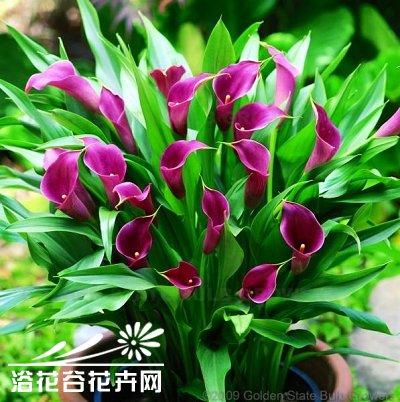
盆栽彩色马蹄莲的栽培技术如下:
上盆要领
预处理:种球到货后,可用赤霉素或勃宁激动素来增加开花数量,可用50-100ppm赤霉素或勃宁激动素浸泡5-10分钟,取出晒干,赤霉素的处理对花梗的长度影响不大,但会使叶片变得狭长,影响观赏价值;500ppm百菌清加500ppm瑞毒霉浸2分钟取出晒干,这一步骤对根茎腐病和软腐病的防治特别重要;在种植时生长点向上;覆土约5厘米后厚;种后淋透清水。
水分管理
块茎需要很多的水分,在生长早期要有规律的浇水,但不要让土太湿,等叶抽出来进入旺盛生长期时注意见干见湿。一般早上浇水,如果天气太热就需要在下午浇水。
使用滴灌能很好的保持水分,在有风的天气下更适于使用。如果要用喷雾灌溉的话,喷头的距离要精确,以保证水量的均匀分布。喷头必须比植株高1米,喷灌系统必须要有足够的压力(至少4千克压力)。植株在水分过多或过少时抗病性会降低,尤其对软腐病抗性会降低。
肥料管理
彩色马蹄莲属于需肥不高的花卉,不同的类型要求不同的肥料水平。用NPK比为20-20-20或12:10:10的均衡肥料,以100ppm的氮浓度每周施一次或200ppm的氮浓度每周施两次左右。
矮化处理
盆栽彩色马蹄莲品种通常高30-50厘米,可根据种植盆的规格和市场需求来决定是否进行矮化处理。嘧啶醇和多效唑对彩色马蹄莲是有效的,矮化处理对叶片的长度有明显的控制,但对花梗的抽长影响不太明显。
病虫害防治
在整个生长季节必须有详细的打药计划,主要用内吸杀虫剂。彩色马蹄莲的主要虫害是蓟马和蚜虫,控制它们特别重要,因为蚜虫能传播病毒。
出芽后就应该开始喷药,每7-10天喷一次,开花结束后,可每3周喷药一次。下面这些药比较适合用在彩色马蹄莲上:地亚农(二嗪磷)、敌杀死、马扑立克(氟胺氰菊脂)、乙酰甲胺磷和敌死通等粒状药(内吸杀菌剂)。这些药在潮湿条件下开始起作用,植株从根部吸收后向上传导,能防治蚜虫和蓟马。这些药品都是危险品,使用时要特别小心,选择多种农药混合使用或轮换使用可防止害虫产生抗药性。注意整个植株都必须喷上药。
种球病害控制
彩色马蹄莲容易被病霉菌和丝核菌从根部侵染,且只有在侵染两周后地上部分才会表现出来,表现为叶片发黄、萎蔫及卷曲等不良症状。如果在潮湿状态下,很容易发生细菌软腐病。在栽植后每2-4周使用根菌清和瑞毒霉,浓度为1升水用0.5克根菌清和0.5克瑞毒霉,灌根一次。
腐霉菌可用呋霜灵控制,但要确保对植株无害,在喷后一周内不要喷杀虫剂。病菌能通过灌溉及地面污染的水传染,要严格检查水源,如有污染要采取针对性处理。
花期病害控制
在湿度大或多雨的季节,花头上有病斑是很常见的。易感染的病害有灰霉病和交链孢萎蔫病。每7-10天喷一次保护性杀菌剂(如百菌清、克菌丹、福美双、代森锰锌和甲苯氟磺胺等)以确保花上有药物残留。
当病害较为严重时,要及时喷治疗性杀菌剂(要能耐小雨,并能在晚上较冷时使用)。这种杀菌剂包括根菌清、异菌脲、咪鲜胺施保克。但一种要每一季只能用2-3次,在湿季下雨前2-3天及时喷药。除了在花期,每10天喷一次可杀得(氢氧化铜)能起到很好的保护效果(100克/100升)。
细菌性软腐病在彩色马蹄莲上是特别严重的问题。好的种球管理将有助于控制细菌性软腐病的发生,尤其是在起球及贮存时应特别注意。当土壤温度高于23℃时植株易感染病菌。
在生长阶段内,当植株抗性减弱时易感染软腐病。许多因素将导致植株抗性减弱,如最初的病原菌侵染、过湿或太干、药害及肥烧、过高的土壤盐分、芽前除草剂的伤害、过高的土壤温度或不适的气候条件。一旦染上细菌性软腐病,病菌将很难根除,可用有保护性的“BTAPO”浇灌,并定期叶面喷洒可杀得(氢氧化铜)。研究表明,抗性弱及细菌性软腐病是彩色马蹄莲栽培上的主要两个问题。细菌性软腐病在高湿、高温条件下极易发生,现在有许多实践经验可用来避免这些问题的发生:
使用排水良好、含氧量高的栽培土壤或基质,因为细菌性软腐病为兼气性厌氧性细菌;
种植密度不要太疏,以利用叶子遮荫,减低土壤温度;
保持土壤微酸性和块茎的高钙浓度,使用石膏可提高钙含量,但不提高pH值,避免人和动物伤害种球。
马蹄莲植株花谢后,应逐渐减少浇水量,至4月下旬搬至室外,放置在略有蔽荫处养护,每天浇水一次,并向花盆附近地面洒水,借以增加空气湿度。6月以后,叶片逐渐枯黄进入休眠期,这时要剪去枯叶,控制浇水,停止施肥,将花盆搬放到通风凉爽处,促使其休眠。至秋季天气转凉后再将块茎从花盆内倒出,取出大的块茎,用新鲜肥沃的培养土重新栽植,待块茎萌发出叶时,再逐渐增加浇水量,同时恢复施肥,便可使其继续开花。
彩色马蹄莲植株开完花后,浇水量要逐渐减少,叶变黄枯萎时,要完全停止浇水。生长季节,每半月施稀薄液肥一次,当花莛抽出后,要增加到每周一次,直到花期结束为止。
家庭盆栽彩色马蹄莲,可施用多元缓释复合肥颗粒,也可用0.2%的尿素加0.1%的磷酸二氢钾混合液。栽培用土,可用园土、腐叶土、泥炭土按2∶2∶1 混合,再加入少量的多元复合肥颗粒。
家庭养护马蹄莲时,还应注意以下三点:一是它的心叶忌水湿,平时浇水不留心,使污水滴流入叶心内,易引起软腐病;二是施肥时要从盆缘施入,切忌肥液淋入叶柄内或溅入株心,否则易引起黄叶或腐烂;三是马蹄莲怕烟熏,否则会引起叶片发黄和花苞脱落。

盆栽彩色马蹄莲的栽培技术如下:
上盆要领
预处理:种球到货后,可用赤霉素或勃宁激动素来增加开花数量,可用50-100ppm赤霉素或勃宁激动素浸泡5-10分钟,取出晒干,赤霉素的处理对花梗的长度影响不大,但会使叶片变得狭长,影响观赏价值;500ppm百菌清加500ppm瑞毒霉浸2分钟取出晒干,这一步骤对根茎腐病和软腐病的防治特别重要;在种植时生长点向上;覆土约5厘米后厚;种后淋透清水。
水分管理
块茎需要很多的水分,在生长早期要有规律的浇水,但不要让土太湿,等叶抽出来进入旺盛生长期时注意见干见湿。一般早上浇水,如果天气太热就需要在下午浇水。
使用滴灌能很好的保持水分,在有风的天气下更适于使用。如果要用喷雾灌溉的话,喷头的距离要精确,以保证水量的均匀分布。喷头必须比植株高1米,喷灌系统必须要有足够的压力(至少4千克压力)。植株在水分过多或过少时抗病性会降低,尤其对软腐病抗性会降低。
肥料管理
彩色马蹄莲属于需肥不高的花卉,不同的类型要求不同的肥料水平。用NPK比为20-20-20或12:10:10的均衡肥料,以100ppm的氮浓度每周施一次或200ppm的氮浓度每周施两次左右。
矮化处理
盆栽彩色马蹄莲品种通常高30-50厘米,可根据种植盆的规格和市场需求来决定是否进行矮化处理。嘧啶醇和多效唑对彩色马蹄莲是有效的,矮化处理对叶片的长度有明显的控制,但对花梗的抽长影响不太明显。
病虫害防治
在整个生长季节必须有详细的打药计划,主要用内吸杀虫剂。彩色马蹄莲的主要虫害是蓟马和蚜虫,控制它们特别重要,因为蚜虫能传播病毒。
出芽后就应该开始喷药,每7-10天喷一次,开花结束后,可每3周喷药一次。下面这些药比较适合用在彩色马蹄莲上:地亚农(二嗪磷)、敌杀死、马扑立克(氟胺氰菊脂)、乙酰甲胺磷和敌死通等粒状药(内吸杀菌剂)。这些药在潮湿条件下开始起作用,植株从根部吸收后向上传导,能防治蚜虫和蓟马。这些药品都是危险品,使用时要特别小心,选择多种农药混合使用或轮换使用可防止害虫产生抗药性。注意整个植株都必须喷上药。
种球病害控制
彩色马蹄莲容易被病霉菌和丝核菌从根部侵染,且只有在侵染两周后地上部分才会表现出来,表现为叶片发黄、萎蔫及卷曲等不良症状。如果在潮湿状态下,很容易发生细菌软腐病。在栽植后每2-4周使用根菌清和瑞毒霉,浓度为1升水用0.5克根菌清和0.5克瑞毒霉,灌根一次。
腐霉菌可用呋霜灵控制,但要确保对植株无害,在喷后一周内不要喷杀虫剂。病菌能通过灌溉及地面污染的水传染,要严格检查水源,如有污染要采取针对性处理。
花期病害控制
在湿度大或多雨的季节,花头上有病斑是很常见的。易感染的病害有灰霉病和交链孢萎蔫病。每7-10天喷一次保护性杀菌剂(如百菌清、克菌丹、福美双、代森锰锌和甲苯氟磺胺等)以确保花上有药物残留。
当病害较为严重时,要及时喷治疗性杀菌剂(要能耐小雨,并能在晚上较冷时使用)。这种杀菌剂包括根菌清、异菌脲、咪鲜胺施保克。但一种要每一季只能用2-3次,在湿季下雨前2-3天及时喷药。除了在花期,每10天喷一次可杀得(氢氧化铜)能起到很好的保护效果(100克/100升)。
细菌性软腐病在彩色马蹄莲上是特别严重的问题。好的种球管理将有助于控制细菌性软腐病的发生,尤其是在起球及贮存时应特别注意。当土壤温度高于23℃时植株易感染病菌。
在生长阶段内,当植株抗性减弱时易感染软腐病。许多因素将导致植株抗性减弱,如最初的病原菌侵染、过湿或太干、药害及肥烧、过高的土壤盐分、芽前除草剂的伤害、过高的土壤温度或不适的气候条件。一旦染上细菌性软腐病,病菌将很难根除,可用有保护性的“BTAPO”浇灌,并定期叶面喷洒可杀得(氢氧化铜)。研究表明,抗性弱及细菌性软腐病是彩色马蹄莲栽培上的主要两个问题。细菌性软腐病在高湿、高温条件下极易发生,现在有许多实践经验可用来避免这些问题的发生:
使用排水良好、含氧量高的栽培土壤或基质,因为细菌性软腐病为兼气性厌氧性细菌;
种植密度不要太疏,以利用叶子遮荫,减低土壤温度;
保持土壤微酸性和块茎的高钙浓度,使用石膏可提高钙含量,但不提高pH值,避免人和动物伤害种球。
马蹄莲植株花谢后,应逐渐减少浇水量,至4月下旬搬至室外,放置在略有蔽荫处养护,每天浇水一次,并向花盆附近地面洒水,借以增加空气湿度。6月以后,叶片逐渐枯黄进入休眠期,这时要剪去枯叶,控制浇水,停止施肥,将花盆搬放到通风凉爽处,促使其休眠。至秋季天气转凉后再将块茎从花盆内倒出,取出大的块茎,用新鲜肥沃的培养土重新栽植,待块茎萌发出叶时,再逐渐增加浇水量,同时恢复施肥,便可使其继续开花。
0
1
文章
Abigal
2017年05月22日

These 13 great edible flowers not only look great but also taste good and rich in nutrients. Start using them to add color and flavor to your food and improve your health.
1. Violet (Pansy)
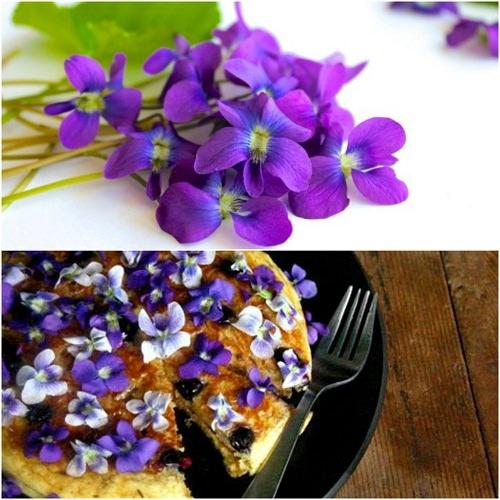
Violets are as satisfying to the eye as they are to the palate, which is the reason they are on our list of great edible flowers. You may have even observed them blended into cocktails and cold drinks. You can also dress up your salad or use it in stuffings or to flavor the desserts.
Learn about the interesting pansy flower recipes here!
They can help with a cough or a headache and are even known to calm pain, especially the esophageal assortment. Violet flowers also purify the blood. Click here to learn more!
2. Chamomile

If you’ve ever sipped a cup of chamomile tea to relax or quiet a resentful stomach, you’re as of now mindful of exactly how relieving chamomile can be. Like dandelion, it’s an individual from the daisy family, and the flower has a flavor that may help you to remember apples. You can chomp on a couple of raw flowers or dry them and utilize them to brew a calming tea.
Learn about the plants you can grow for beauty therapies
Some of its medical advantages incorporate ADHD, relief from bloating, stomach infirmities and insomnia. In any case, the individuals who are allergic to ragweed are encouraged to dodge chamomile.
3. Rose

Among the majority of the edible flowers out there, the rose is a standout amongst the most well-known and it also has great culinary uses. You may also have tasted different foods flavored with rose, for example, rose tea, rose water, rose jelly, rose milk and even rose ice cream.
Take a look at this Indian Rose Milk recipe, it’s too delicious!
Not just culinary uses, roses can also help your body in various ways. Rose hips, which are the base of the flowers, can be utilized to oversee indigestion, arthritis, fevers, urinary issues and constipation. Rose petals are rich in various vitamins and minerals, including vitamins A, E, C, D, and B.
4. Clover flowers

If you consider clover as a weed, you should not! This useful flowering plant has many medicinal and edible uses. The sweet, anise-like taste makes it unique. Serve raw petals in a salad or utilize to make a tea. Brightest and healthiest flowers must be picked; it can taste intense once it begins turning chestnut.
Learn how to grow clover!
Local Americans utilize the flower for cough and cold, and it also helps in a condition like varicose veins known as venous inadequacy. This natural blood purifier is supportive with hot flashes and uterine fibroids. If you want to know more about the clover health benefits, click here.
5. Saffron

Saffron gives a great taste and color to dishes. Also, the saffron is rich in minerals, for example, potassium, calcium, copper, iron, zinc, magnesium, selenium and manganese. It has various vitamins, for example, folic acid, niacin, and vitamins A and C.
It has generally been utilized as an antioxidant, antidepressant, and antiseptic.
6. Tree Peony

Peonies, which is local to China, is more than only a delightful flower to look at. It really conveys with it a large group of healing properties. Peonies can be added into salads or you can boil the petals and make a tea.
It holds a large group of advantages, particularly for those with diabetes or high cholesterol, it also prevents blood clotting. This bloom has one of the highest convergences of phenolic mixes, which are anti-inflammatory and may lessen the risk of heart disease and certain cancers. Click here to learn more!
7. Japanese Honeysuckle
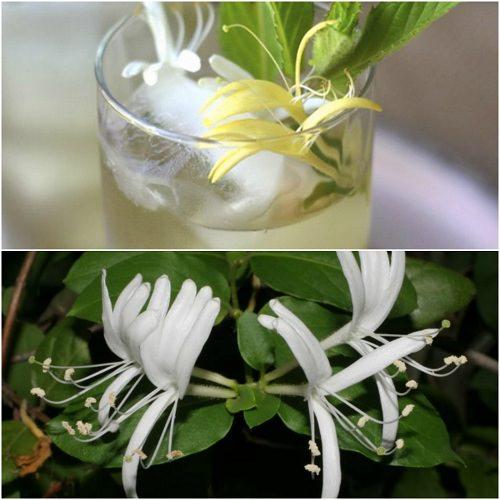
The Japanese honeysuckle grows wild in the U.S. or in many other parts of the world, it’s essential to remember that there are various species of honeysuckle with fluctuating levels of safety and advantages. The yellowish blossom petals of the honeysuckle have sweet nectar-like flavor. Remember that only the blossoms are eatable; the bloom’s dark berries are very noxious so continue with care.
Learn about the 5 recipes that use Honeysuckle flowers as an ingredient!
The blossom has been reported to help with issues, for example, flu, depression, blood impurities, tick bites, infections and even gout. Their cancer prevention properties are well-known too.
8. Marigold (Calendula)

Its (all marigold flowers are edible) merry orange color looks beautiful when it crowns a dish of rice or pasta, and its peppery taste is satisfying in soups and eggs. It can be used in place of saffron.
Calendula is known to heal skin and lessen inflammation, helping wounds, cuts, ulcers and eczema.
9. Nasturtium
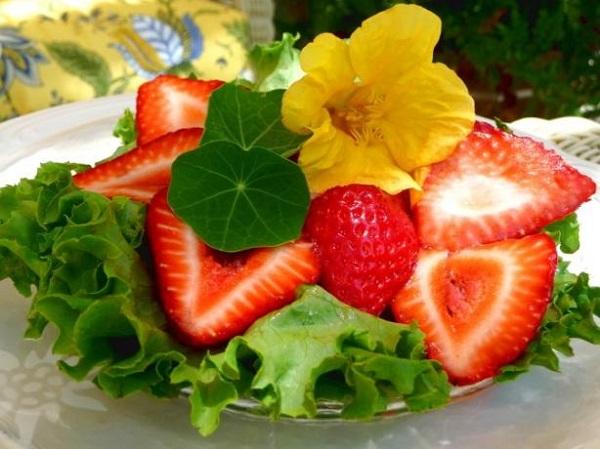
The beautiful, bright, and mildly fragrant nasturtium flowers not only makes your hanging basket charming, you can also pick them fresh to use in salads or garnish your recipes with them to add color. Their mild peppery, sweet, and mustard-like flavor gives a unique taste to the dishes they add into.
Adding nasturtiums to your food not only add color, but they are a good source of Vitamin C and other nutrients. Thus, boosting the immune system and helps in fighting against flu, cough, and cold.
10. Bee Balm

Bee balm is a great medicinal plant. Growing this plant in your garden has many benefits, not only its flowers attract bees and hummingbirds but the entire plant above the ground is edible. Bee Balm leaves and flowers and stems are used in alternative medicine as an antiseptic, carminative, diaphoretic, diuretic and stimulant.
Learn how to grow bee balm here!
The flower petals are a great addition to a fruit salad, you can also steep the flower heads in liquid, strain to make a delicious sorbet or even jam.
11. Lavender

Lavender Cupcakes
Lavender is a great culinary and medicinal herb. Also, it is one of the most used ingredients in cosmetic industries. In all the lavender cultivars, English lavender is most used for culinary purposes due to its sweet fragrance.
Learn how to grow lavender here
Renee’s Garden has a good article on edible and culinary uses of lavender. Click here to read!
12. Jasmine

Jasmine Spritzers
We don’t need to inform you that jasmine is the most fragrant flower in the world. Its intense heady scent is just too good to smell and apart from having many cosmetic uses, jasmine flowers have many edible uses too. Read this informative article to learn about Jasmine flower’s medicinal uses.
Learn about the plants you can grow in your kitchen
In foods, jasmine is used to flavor beverages, frozen dairy desserts, candy, baked goods, gelatins, and puddings. Puddings and dairy desserts with the use of jasmine flowers taste so delicious.
13. Hibiscus

The showy hibiscus blooms are so attractive to look at. If you’re growing this beauty in your garden you already know that. It’s said that all Hibiscus cultivars’ flowers are edible but many hybrid varieties are available so there could be a risk. However, Hibiscus-rosa-Sinensis, Hibiscus sabdiriffa, and other tropical cultivars are edible.
Hibiscus tea is something you can make from hibiscus flowers. It has great effects on health too.
1. Violet (Pansy)

Violets are as satisfying to the eye as they are to the palate, which is the reason they are on our list of great edible flowers. You may have even observed them blended into cocktails and cold drinks. You can also dress up your salad or use it in stuffings or to flavor the desserts.
Learn about the interesting pansy flower recipes here!
They can help with a cough or a headache and are even known to calm pain, especially the esophageal assortment. Violet flowers also purify the blood. Click here to learn more!
2. Chamomile

If you’ve ever sipped a cup of chamomile tea to relax or quiet a resentful stomach, you’re as of now mindful of exactly how relieving chamomile can be. Like dandelion, it’s an individual from the daisy family, and the flower has a flavor that may help you to remember apples. You can chomp on a couple of raw flowers or dry them and utilize them to brew a calming tea.
Learn about the plants you can grow for beauty therapies
Some of its medical advantages incorporate ADHD, relief from bloating, stomach infirmities and insomnia. In any case, the individuals who are allergic to ragweed are encouraged to dodge chamomile.
3. Rose

Among the majority of the edible flowers out there, the rose is a standout amongst the most well-known and it also has great culinary uses. You may also have tasted different foods flavored with rose, for example, rose tea, rose water, rose jelly, rose milk and even rose ice cream.
Take a look at this Indian Rose Milk recipe, it’s too delicious!
Not just culinary uses, roses can also help your body in various ways. Rose hips, which are the base of the flowers, can be utilized to oversee indigestion, arthritis, fevers, urinary issues and constipation. Rose petals are rich in various vitamins and minerals, including vitamins A, E, C, D, and B.
4. Clover flowers

If you consider clover as a weed, you should not! This useful flowering plant has many medicinal and edible uses. The sweet, anise-like taste makes it unique. Serve raw petals in a salad or utilize to make a tea. Brightest and healthiest flowers must be picked; it can taste intense once it begins turning chestnut.
Learn how to grow clover!
Local Americans utilize the flower for cough and cold, and it also helps in a condition like varicose veins known as venous inadequacy. This natural blood purifier is supportive with hot flashes and uterine fibroids. If you want to know more about the clover health benefits, click here.
5. Saffron

Saffron gives a great taste and color to dishes. Also, the saffron is rich in minerals, for example, potassium, calcium, copper, iron, zinc, magnesium, selenium and manganese. It has various vitamins, for example, folic acid, niacin, and vitamins A and C.
It has generally been utilized as an antioxidant, antidepressant, and antiseptic.
6. Tree Peony

Peonies, which is local to China, is more than only a delightful flower to look at. It really conveys with it a large group of healing properties. Peonies can be added into salads or you can boil the petals and make a tea.
It holds a large group of advantages, particularly for those with diabetes or high cholesterol, it also prevents blood clotting. This bloom has one of the highest convergences of phenolic mixes, which are anti-inflammatory and may lessen the risk of heart disease and certain cancers. Click here to learn more!
7. Japanese Honeysuckle

The Japanese honeysuckle grows wild in the U.S. or in many other parts of the world, it’s essential to remember that there are various species of honeysuckle with fluctuating levels of safety and advantages. The yellowish blossom petals of the honeysuckle have sweet nectar-like flavor. Remember that only the blossoms are eatable; the bloom’s dark berries are very noxious so continue with care.
Learn about the 5 recipes that use Honeysuckle flowers as an ingredient!
The blossom has been reported to help with issues, for example, flu, depression, blood impurities, tick bites, infections and even gout. Their cancer prevention properties are well-known too.
8. Marigold (Calendula)

Its (all marigold flowers are edible) merry orange color looks beautiful when it crowns a dish of rice or pasta, and its peppery taste is satisfying in soups and eggs. It can be used in place of saffron.
Calendula is known to heal skin and lessen inflammation, helping wounds, cuts, ulcers and eczema.
9. Nasturtium

The beautiful, bright, and mildly fragrant nasturtium flowers not only makes your hanging basket charming, you can also pick them fresh to use in salads or garnish your recipes with them to add color. Their mild peppery, sweet, and mustard-like flavor gives a unique taste to the dishes they add into.
Adding nasturtiums to your food not only add color, but they are a good source of Vitamin C and other nutrients. Thus, boosting the immune system and helps in fighting against flu, cough, and cold.
10. Bee Balm

Bee balm is a great medicinal plant. Growing this plant in your garden has many benefits, not only its flowers attract bees and hummingbirds but the entire plant above the ground is edible. Bee Balm leaves and flowers and stems are used in alternative medicine as an antiseptic, carminative, diaphoretic, diuretic and stimulant.
Learn how to grow bee balm here!
The flower petals are a great addition to a fruit salad, you can also steep the flower heads in liquid, strain to make a delicious sorbet or even jam.
11. Lavender

Lavender Cupcakes
Lavender is a great culinary and medicinal herb. Also, it is one of the most used ingredients in cosmetic industries. In all the lavender cultivars, English lavender is most used for culinary purposes due to its sweet fragrance.
Learn how to grow lavender here
Renee’s Garden has a good article on edible and culinary uses of lavender. Click here to read!
12. Jasmine

Jasmine Spritzers
We don’t need to inform you that jasmine is the most fragrant flower in the world. Its intense heady scent is just too good to smell and apart from having many cosmetic uses, jasmine flowers have many edible uses too. Read this informative article to learn about Jasmine flower’s medicinal uses.
Learn about the plants you can grow in your kitchen
In foods, jasmine is used to flavor beverages, frozen dairy desserts, candy, baked goods, gelatins, and puddings. Puddings and dairy desserts with the use of jasmine flowers taste so delicious.
13. Hibiscus

The showy hibiscus blooms are so attractive to look at. If you’re growing this beauty in your garden you already know that. It’s said that all Hibiscus cultivars’ flowers are edible but many hybrid varieties are available so there could be a risk. However, Hibiscus-rosa-Sinensis, Hibiscus sabdiriffa, and other tropical cultivars are edible.
Hibiscus tea is something you can make from hibiscus flowers. It has great effects on health too.
0
0
文章
Abigal
2017年05月22日


Our backyards are used for BBQ’s and family gatherings, playgrounds and football games. Don’t forget to use your yard for some good ‘ol wind down time! These 13 projects for backyard relaxation will help turn your garden space into a zen place. Catchy, right? :) Our feature project above, is a hanging bed from ‘The Devoted Wife‘.
From ‘Pottery Barn‘, we love this backyard bed space too! Want to make one of your own? Then jump on over to our post on DIY garden hanging beds and find a bunch of great tutorials!

If you love those hanging beds, then try something a little different with this deck makeover by Sarah Dorsey for ‘Home Depot’. In this one post, there is a tutorial for her DIY hanging bench, cable railing, privacy curtains and deck makeover. What a cool space to have a glass of wine or tea in!

Need a more comfy spot, perhaps under a tree? For a whole afternoon? We feel ya. Try this DIY hammock from ‘Martha’ made from a simple drop cloth.

Or learn how to make a rope hammock from ‘Kinfolk’. This is just inexpensive nylon rope and overhand knots! Or for more ideas, check out our post on DIY hammocks.

Amy of ‘Her Tool Belt’ did this DIY chaise tutorial from 2×4’s for ‘Bob Vila’. Just in case you were getting tired of laying down… ;)

These DIY chaise lounges look perfect for a warm afternoon! Made by ‘Being Brooke’ at ‘Ana White’, she did these for $35!

Ok, now you have a place to relax your body, now it’s time to relax the soul! Start with water… this DIY fountain from ‘Oregon Live’ ought to do it!

‘Diane and Dean’ have another take for you…. They did this garden fountain on the edge of an existing pool to add to the ambience, and it looks kinda “tropical wonderland” to us!

If water hasn’t gotten you there, how about wind? Make your own wind chimes with this tutorial by ‘HGTV’. This is a simple project using a craft round, pipe and twine.

Or make these DIY wind chimes in an hour with things from the shop, including simple washers! From ‘Bob Vila’.

Ok, so now you’ve had a relaxing afternoon, but the evening is creeping in… No need to start the stress parade again.! Just fire up your DIY propane fire pit! This one from ‘WC Welding’ was done in just 5 steps from a garden patio table.
Finally, if you want to get a bit serious, jump on over to one of our fav sites, ‘Homemade Modern’ and learn how to make their concrete fire pit.

Ok, are we officially in kick back mode yet?
0
1
文章
Rainbow
2017年05月21日

#蜈蚣草 常地生和附生于溪边林下的石缝中和树干上。喜温暖潮润和半阴环境。生长适温3~9月为16~24℃,9月至翌年3月为13~16℃。冬季温度不低干8℃,但短时间能耐0℃低温。也能耐30℃以上高温。

由于蜈蚣草喜湿润土壤和较高的空气湿度。春、秋季需充足浇水,保持盆土不干,但浇水不宜太多,否则叶片易枯黄脱落。夏季除浇水外,每天还需喷水数次,特别悬挂栽培需空气湿度更大些,否则空气干燥,羽状小叶易发生卷边、焦枯现象。蜈蚣草喜明亮的散射光,但也能耐较低的光照,切忌阳光直射。规模性栽培应设遮阳网,以50%~60%遮光率为合适。
盆栽蜈蚣草宜用疏松、肥沃,透气的中性或微酸性土壤。常用腐叶土或泥炭土、培养土或粗沙的混合基质。盆底多垫碎瓦片和碎砖,有利于排水、透气。生长期每旬施肥1次,又
可用”卉友”20-20-20通用肥或20-8-20四季用高硝酸钾肥。同时,生长期要随时摘除枯叶和黄叶,保持叶片清新翠绿。吊钵栽培时要多喷水,多根外追肥和修剪调整株态,并注意通风。
病虫害防治:室内栽培时,如通风不好,易遭受蚜虫和红蜘蛛危害,可用肥皂水或40%氧化乐果乳油1000倍液喷洒防治。在浇水过多或空气湿度过大时,肾蕨易发生生理性叶枯病,注意盆土不宜太湿并用65%代森锌可湿性粉剂600倍液喷洒。

由于蜈蚣草喜湿润土壤和较高的空气湿度。春、秋季需充足浇水,保持盆土不干,但浇水不宜太多,否则叶片易枯黄脱落。夏季除浇水外,每天还需喷水数次,特别悬挂栽培需空气湿度更大些,否则空气干燥,羽状小叶易发生卷边、焦枯现象。蜈蚣草喜明亮的散射光,但也能耐较低的光照,切忌阳光直射。规模性栽培应设遮阳网,以50%~60%遮光率为合适。
盆栽蜈蚣草宜用疏松、肥沃,透气的中性或微酸性土壤。常用腐叶土或泥炭土、培养土或粗沙的混合基质。盆底多垫碎瓦片和碎砖,有利于排水、透气。生长期每旬施肥1次,又
可用”卉友”20-20-20通用肥或20-8-20四季用高硝酸钾肥。同时,生长期要随时摘除枯叶和黄叶,保持叶片清新翠绿。吊钵栽培时要多喷水,多根外追肥和修剪调整株态,并注意通风。
病虫害防治:室内栽培时,如通风不好,易遭受蚜虫和红蜘蛛危害,可用肥皂水或40%氧化乐果乳油1000倍液喷洒防治。在浇水过多或空气湿度过大时,肾蕨易发生生理性叶枯病,注意盆土不宜太湿并用65%代森锌可湿性粉剂600倍液喷洒。
0
0
文章
绮丽
2017年05月21日


文竹和武竹的区别~植株特征
#文竹 植株特征
文竹的植株高度可以达到几米;
其茎干根部呈肉质生长,茎柔软丛生,很细长,而且多分枝;
文竹的叶子:叶状枝都会以每10~13枚成簇生长,呈刚毛状,略具三棱形;
其花每4朵腋生于枝条上面,花开是白色,有短梗生长,它的花期在9~10月之间,花期很短。

文竹的浆果在成熟时是紫黑色的,有1~3颗种子。
武竹的植株特征
武竹的植株上的茎和分枝都有纵稜分布,其茎干细长平滑无毛覆盖生长。
武竹的叶子:其叶状枝每3枚就能成簇,形状扁平或者是条形的,叶子的先端呈现锐尖头;
武竹的花:其花为总状花序,花朵单生或着是成对生长在枝条的顶端,一课武竹就可以开花十几朵;

其花朵为白色,花被片是矩圆状卵形的,雄蕊上面有很短的花药分布生长;
其浆果成熟时是红色的,有1-2颗种子。
文竹和武竹的区别~生长习性
文竹生长习性
文竹喜好温暖湿润和半阴通风的生长环境,不耐寒,不耐干旱,浇水不可以太多,夏季害怕阳光直射,需要适当遮阴;
其原生长于山野之间,多被人们用来栽培于庭园供观赏。

武竹生长习性
武竹喜好温暖湿润的生长环境,怕强光低温,这种情况下会停止生长,耐干旱和瘠薄的土地,不耐寒;
文竹多被人们用来布置会场,切叶配置花篮、花圈等。

0
2







